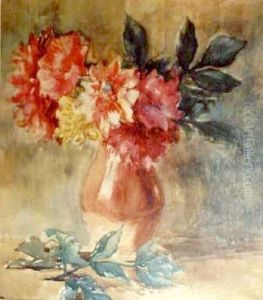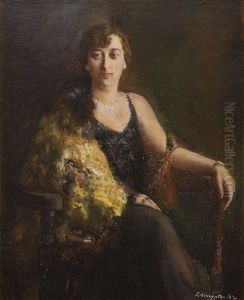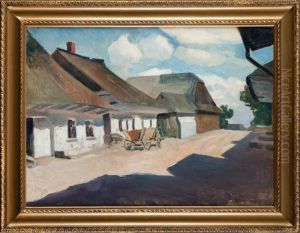Lucjan Adwentowicz Paintings
Lucjan Adwentowicz was a Polish artist born in 1907, whose work spanned across various artistic disciplines including painting, drawing, and graphic arts. Throughout his career, Adwentowicz developed a distinctive style that resonated with the artistic movements of his time, yet he maintained a unique voice that set his work apart from his contemporaries. He was part of a generation of artists who navigated the complexities of the interwar period, World War II, and the post-war era, reflecting the tumultuous history of the 20th century in his art.
Adwentowicz's early career was marked by experimentation with different styles and forms, as he sought to find a visual language that was both personal and expressive. His work from this period shows an artist deeply engaged with the European avant-garde, yet always attentive to the specific cultural and social context of Poland. The impact of the war and the post-war political changes in Poland profoundly influenced Adwentowicz's art, leading him to adopt a more somber tone and to focus on themes such as human suffering, resilience, and the search for meaning amidst chaos.
Despite the challenges of working under a communist regime, which imposed strict controls on artistic expression, Adwentowicz continued to produce work that was both innovative and reflective of his times. He was adept at navigating the boundaries of what was politically acceptable, using allegory and symbolism to express deeper truths about the human condition. In addition to his visual art, Adwentowicz was also involved in the cultural life of Poland, participating in exhibitions, and contributing to the artistic community through teaching and mentorship.
Lucjan Adwentowicz passed away in 1986, leaving behind a body of work that continues to be celebrated for its depth, creativity, and historical insight. His art remains a testament to the resilience of the human spirit in the face of adversity and change. Today, Adwentowicz's work is featured in collections and exhibitions both in Poland and internationally, securing his place as a significant figure in the history of Polish art.



